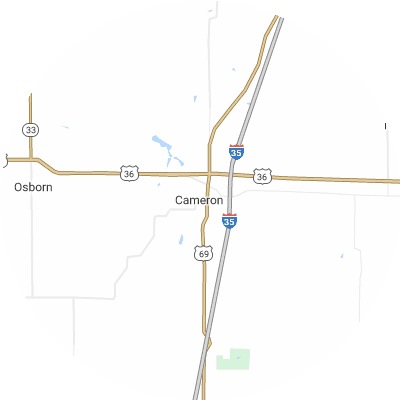Signs You May Need Gutter Guards
Gutter guards aren't required for all homes, but evidence of clogged gutters is clear. Signals of recurring gutter troubles are:
- Mold growth, peeling exterior paint, or interior water stains on walls near gutters.
- Visibly damaged, sagging, or misaligned gutters that no longer correctly direct rainwater
- Soggy ground or visible erosion patterns around your house's foundation
- Leaky seams or joints where water leaks from the gutters
- Frequent clogs that lead to overflow and water spilling over gutters
How To Choose a Gutter Guard Installer
Assess Their Experience
When selecting an installation company, look for one with considerable experience and knowledge about various brands and guard types. A company with experience will understand how to take measurements and install gutter guards for your specific needs. Check a company's years of experience and request referrals from local customers.
Verify Proper Licensing and Insurance
Verify that any businesses you're considering are properly licensed, bonded, and insured, with both workers compensation and general liability coverage. This protects you from liability for potential injuries and accidents. Request current licensing and insurance papers from any potential providers.
Choose Reputable Brands
Look for installers that provide tenured trusted gutter guard brands such as Gutter Helmet and LeafFilter. Steer clear of companies that only install generic no-name guards or their own off-brand products. These lesser-known products may not have the same level of rigorous testing as major brands.
Seek Custom Fit Services
For ideal performance, gutter guards need to be measured and trimmed on-site to match your specific gutter setup. Pick a company that uniquely sizes and cuts guards specifically for your home, rather than using generic guards. Accurately fitted guards will leave no gaps for debris to get stuck.
Examine Warranties
High-quality gutter guard installers typically offer 20-year or lifetime warranties covering rust, clogs, leaks, and other problems. Before picking a company, carefully read through the warranty terms for workmanship and materials guarantees. Warranties are the best way to protect your gutter investment.
Check Reviews and Referrals
Take some time to research online reviews on sites such as the Better Business Bureau (BBB), Google Reviews, or Yelp to learn more about customer experiences. You can also ask your neighbors for recommendations on quality gutter guard businesses in your area. When researching potential providers, it's best to opt for companies with consistently good reviews rather than just one or two reviews.
Types of Gutter Guards
The six typical gutter guard types are as follows:
- Brush guards are made of large brush bristles that sit inside your gutters, allowing water to pass through while catching debris. On average, you can expect to pay $4.04 per linear foot for brush guards.
- Foam guards are lightweight and easy to install. With this type of guard, debris lands on the foam instead of in your gutter. Foam guards cost roughly $2.46 per linear foot.
- Screen guards have large holes that let water through while stopping debris. Screen guards cost around $4.20 per linear foot.
- Mesh guards stop debris but let water through. Mesh guards have even smaller holes than screen guards. They're durable and let debris slide off rather than sitting on top of the gutters. Mesh guards cost roughly $3.99 per linear foot.
- Micro-mesh guards have even smaller holes than mesh guards and let even less debris through than mesh. They are extremely effective. On average, you can expect to pay $5.07 per linear foot for micro-mesh guards.
- Surface tension guards, sometimes called reverse curve guards, use surface tension to allow debris to slide off while water flows into the gutter. They can typically be seen from the ground. Surface tension guards cost around $3.10 per linear foot.













